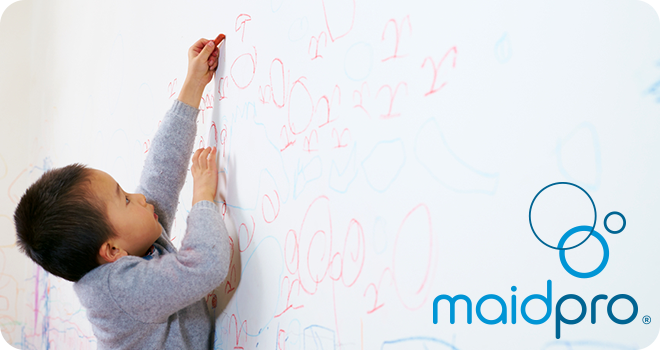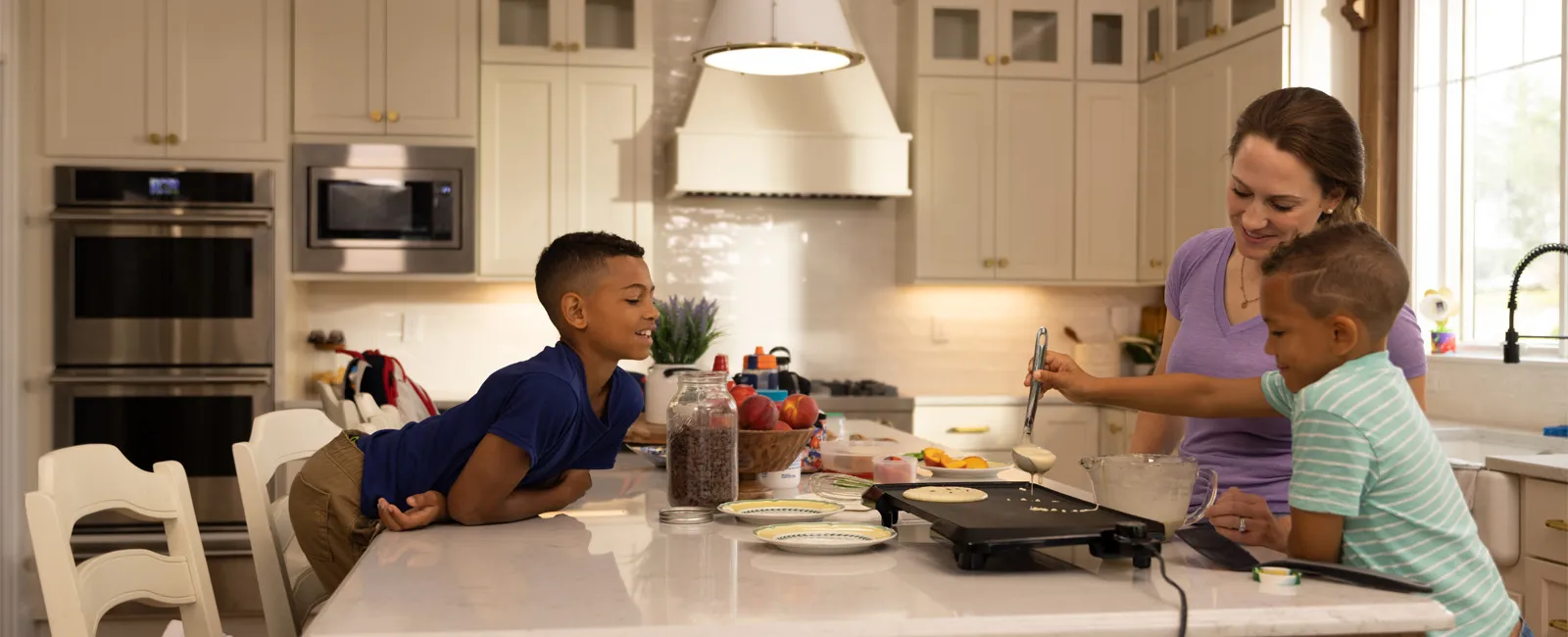
There is something about a pristine expanse of wall that no toddler—momentarily unsupervised with a crayon, marker or, heaven forbid, permanent marker in hand—can resist.
And, while you might be tempted to spend a few moments appreciating your pint-sized Picasso’s brilliant artwork, time is not on your side when it comes to effectively cleaning the wall.
A quick Google search yields dozens of potential solutions for removing crayon, regular-, and permanent-marker stains from walls—everything from mayonnaise to non-gel toothpaste, baking soda, hand sanitizer, vinegar, nail-polish remover, hairspray, WD40, rubbing alcohol, turpentine, pencil erasers, Magic Erasers, dry-erase markers, hair dryers, and more.
What is often left out of these articles is that some of the solutions work by being oily—meaning they lift the marks away, but can leave their own permanent, greasy stains behind. Others work by reacting chemically with the stain–meaning they can also alter your wall’s paint chemistry, leaving it tacky, discolored, or faded. OR, they work by being abrasive—meaning that, along with removing the offending marks, they might also rub away some of your wall’s paint or paper covering.
Four essential rules for reacting to a pop-up toddler art show are to:
- Act quickly before the wall has a chance to absorb the marks.
- Know your surface—both its absorbency and susceptibility to damage from cleaning.
- Test each solution in an inconspicuous spot before applying to visible areas.
- And, as with all stain removal, begin with the least aggressive treatment and work progressively toward harsher, more potentially damaging treatments. And when in doubt, call in a PRO.
Here’s a quick rundown of how to approach different wall finishes:
Semi- or high-gloss paints. If you’re lucky, your toddler will have chosen to draw on a door, doorframe, or molding, which are the most likely to be finished with glossier paints. These finishes are the least likely to absorb stains and least susceptible to staining from oil-based solutions or permanent discoloration from use of mild abrasives.
Eggshell and satin paints. These moderately glossy finishes are popular because they do a reasonably good job of hiding wall-surface imperfections, but are less likely than flatter finishes to absorb surface stains or to sustain damage from rigorous cleaning. While you should always start gently, if you know for sure that a wall is finished with an eggshell or satin paint, you can afford to be somewhat more aggressive with how you escalate stain removal before facing the prospect of repainting.
Matte or flat paints. Popular for their superiority at hiding wall-surface imperfections, flatter paint finishes are, unfortunately, the most stain absorbent and susceptible to damage from cleaning. Use only the mildest pH-balanced cleaning solutions and avoid heavy scrubbing with abrasives on any colored surface. This includes baking soda, white toothpaste, steel wool, abrasive sponges, and so-called magic erasers, which, while seeming soft, use microscopic glass beads to abrade stains away. Be prepared for the possibility of needing to repaint matte- or flat-finished walls.
Wall paper. Most modern wallpapers contain some vinyl or plastic-type coating that can withstand gentle washing and stain removal tactics. But, even if designated as washable, stick to only mild pH-balanced cleaners and avoid abrasives of any kind. For small marks, try a pencil or art eraser followed by judicious use of either a commercial chemical cleaner or common-household solution such as nail-polish remover, hairspray, or hand sanitizer. Especially with wall paper, test somewhere inconspicuous before using on the main stain.

